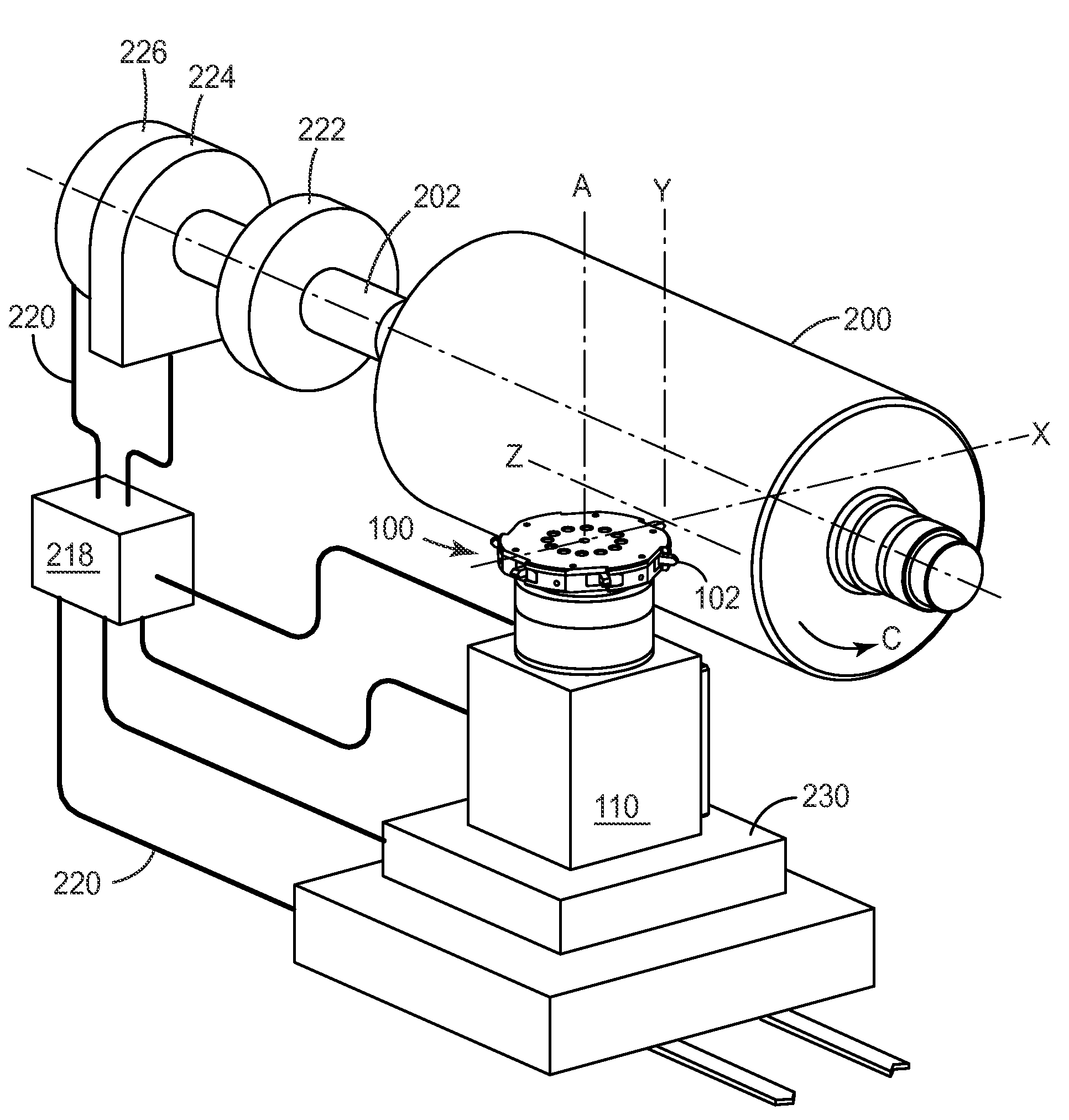Fly-cutting system and method, and related tooling and articles
- Summary
- Abstract
- Description
- Claims
- Application Information
AI Technical Summary
Benefits of technology
Problems solved by technology
Method used
Image
Examples
Embodiment Construction
[0025]In conventional fly-cutting operations, a fly-cutter is positioned relative to a workpiece, a motor is activated to rotate the head and the associated cutting element or elements, and the fly-cutting head is moved relative to the workpiece to cut a groove or other feature into the workpiece. Fly-cutting, which is a type of milling, is typically a discontinuous cutting operation, meaning that each cutting element is in contact with the workpiece for a period of time, and then is not in contact with the workpiece for a period of time during which the fly-cutting head is rotating that cutting element through the remaining portion of a circle until it again contacts the workpiece. Although a fly-cutting operation is typically discontinuous, the resulting groove segment or other surface feature formed in a workpiece by the fly-cutter may be continuous (formed by a succession of individual, but connected cuts, for example) or discontinuous (formed by disconnected cuts), as desired. ...
PUM
| Property | Measurement | Unit |
|---|---|---|
| diameter | aaaaa | aaaaa |
| depth | aaaaa | aaaaa |
| depth | aaaaa | aaaaa |
Abstract
Description
Claims
Application Information
 Login to View More
Login to View More - R&D
- Intellectual Property
- Life Sciences
- Materials
- Tech Scout
- Unparalleled Data Quality
- Higher Quality Content
- 60% Fewer Hallucinations
Browse by: Latest US Patents, China's latest patents, Technical Efficacy Thesaurus, Application Domain, Technology Topic, Popular Technical Reports.
© 2025 PatSnap. All rights reserved.Legal|Privacy policy|Modern Slavery Act Transparency Statement|Sitemap|About US| Contact US: help@patsnap.com



